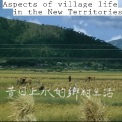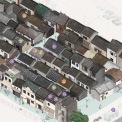-
History & Society
- Education in Pre-war Hong Kong
- History of Taikoo Sugar Refinery
- Hong Kong Products Exhibition
- Local Festivals Around the Year
- Post-war Industries
- Pre-war Industry
- The Hong Kong Jockey Club Archives
- Tin Hau Festival
- Memories We Share: Hong Kong in the 1960s and 1970s
- History in Miniature: The 150th Anniversary of Stamp Issuance in Hong Kong
- A Partnership with the People: KAAA and Post-war Agricultural Hong Kong
- The Oral Legacies (I) - Intangible Cultural Heritage of Hong Kong
- Hong Kong Currency
- Hong Kong, Benevolent City: Tung Wah and the Growth of Chinese Communities
- The Oral Legacies Series II: the Representative List of the Intangible Cultural Heritage of Hong Kong
- Braving the Storm: Hong Kong under Japanese Occupation
- A Century of Fashion: Hong Kong Cheongsam Story
Geography & EnvironmentArt & Culture- Calendar Posters of Kwan Wai-nung
- Festival of Hong Kong
- Ho Sau: Poetic Photography of Daily Life
- Hong Kong Cemetery
- Sketches by Kong Kai-ming
- The Culture of Bamboo Scaffolding
- The Legend of Silk and Wood: A Hong Kong Qin Story
- Journeys of Leung Ping Kwan
- From Soya Bean Milk To Pu'er Tea
- Applauding Hong Kong Pop Legend: Roman Tam
- 他 FASHION 傳奇 EDDIE LAU 她 IMAGE 百變 劉培基
- A Eulogy of Hong Kong Landscape in Painting: The Art of Huang Bore
- Imprint of the Heart: Artistic Journey of Huang Xinbo
- Porcelain and Painting
- A Voice for the Ages, a Master of his Art – A Tribute to Lam Kar Sing
- Memories of Renowned Lyricist: Richard Lam Chun Keung's Manuscripts
- Seal Carving in Lingnan
- Literary Giant - Jin Yong and Louis Cha
-
History & SocietyGeography & EnvironmentArt & Culture
-
View Oral History RecordsFeatured StoriesAbout Hong Kong Voices
-
Hong Kong MemoryA Partnership with the People: KAAA and Post-war Agricultural Hong KongRecently Visited
Pig Raising Scheme
In the first year of operation, KAAA’s attention was directed solely towards teaching the art of pig raising. Lawrence and Horace Kadoorie knew that pigs grew more rapidly than any other farm animals, and so the farmers would have the satisfaction of nurturing their rapidly growing capital. The brothers’ decision was also helped by the fact that there was a steady demand for pork in Hong Kong. All of these were to become the driving force behind the growth of the pig industry in post-war Hong Kong.
Interest-free loan for pigsty construction
KAAA was insistent that pigsties ought not be built on private land as ownership transfers would affect the piggery. To help farmers qualify for these loans, the District Offices found and secured crown land for construction.
Free sows
Two to three sows would be offered as breeding stock.
Loan for pig feed purchase
Loans were re-paid once litters were mature and ready to be sold at market.
Pigs to supplement vegetable growing
KAAA helped poor vegetable growers exploit a secondary source of income through pig rearing. Farmers could feed their pigs with waste vegetables and use the pig manure as a fertiliser. Breeding and farm management were also part of KAAA’s concern. Check out the “Paak Ngau Shek Experimental Farm” section.
Boar-on-demand
For a small charge, the Government supplied boars to mate with sows. This service was also available from local boar keepers. In 1959, the Government introduced artificial insemination to better protect swine from contagious diseases.
Copyright © 2012 Hong Kong Memory. All rights reserved.













